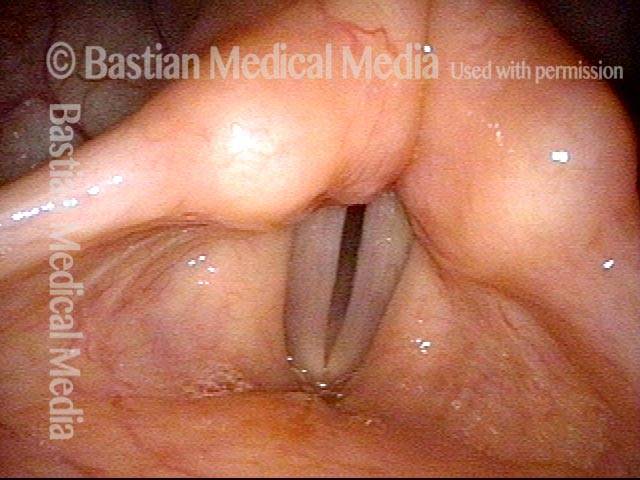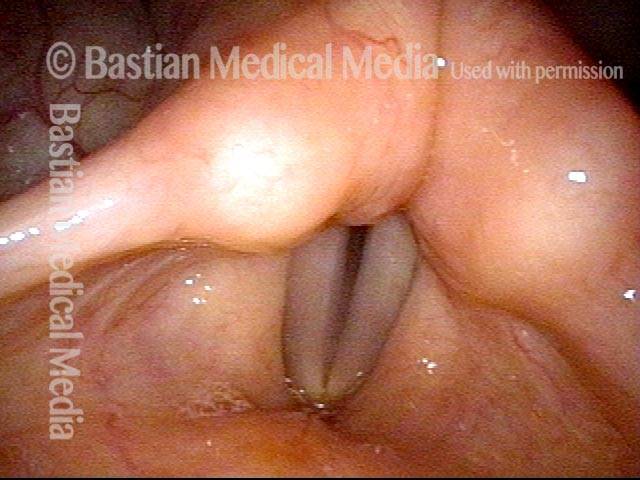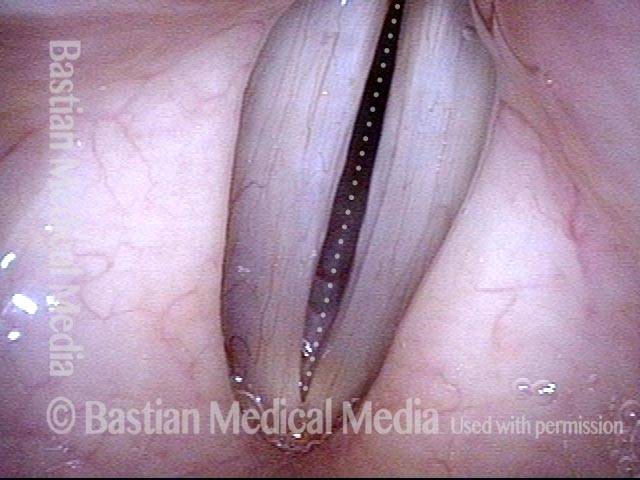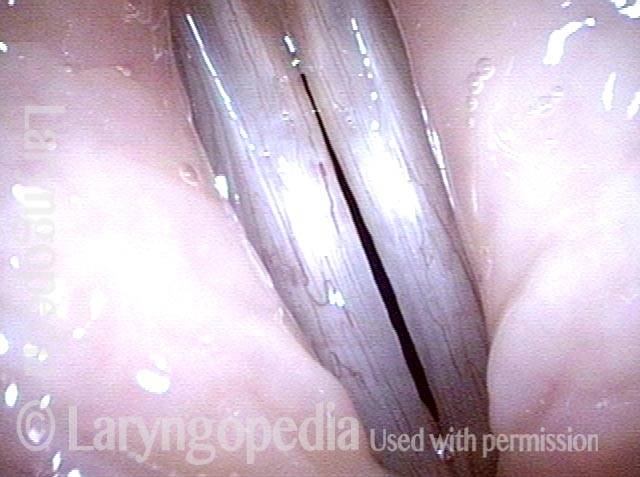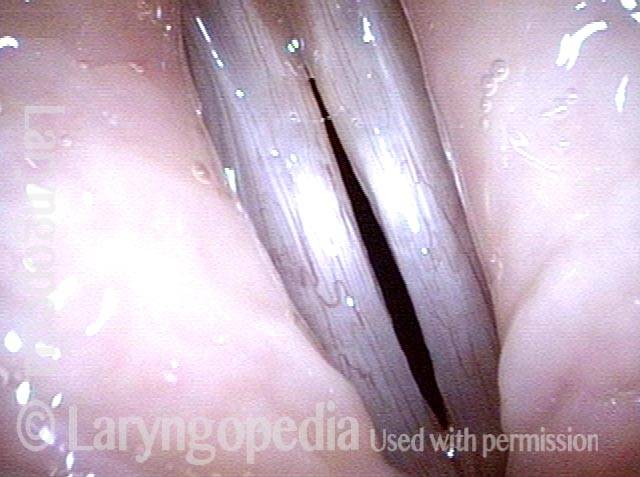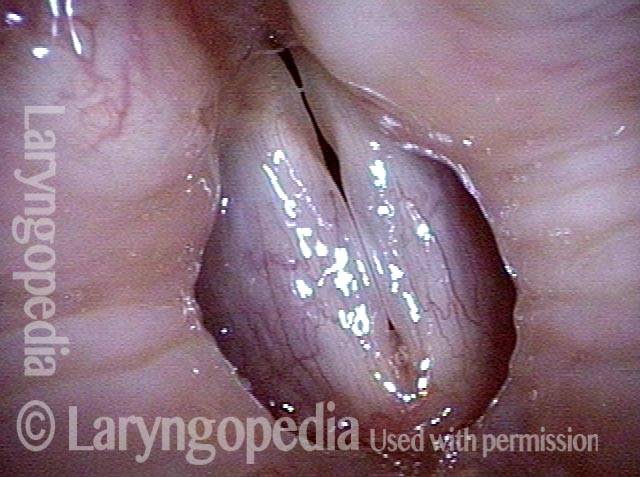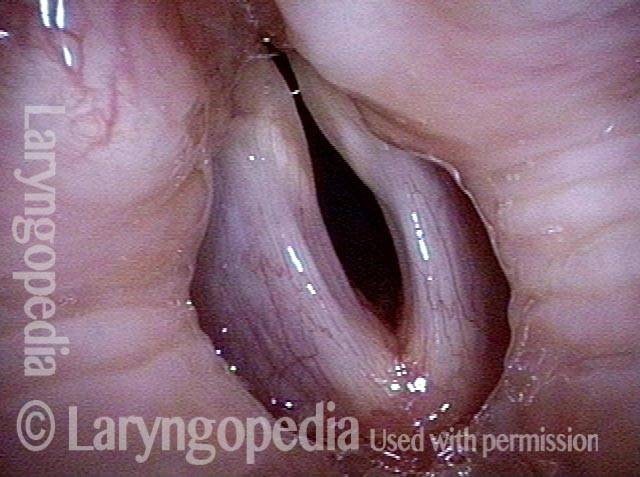Phonatory gap occurs when the vocal cords fail to close during phonation. A phonatory gap may be seen in patients who have muscle tension dysphonia, vocal cord paresis or paralysis, loss of tissue, or vocal cord flaccidity.
In addition, however, a phonatory gap occasionally occurs in patients who have none of the above conditions. In this type of case, the patient will struggle with onset delays, but delays that “pop” followed by relatively clear voice rather than the scratchier or hoarser-sounding onset delays associated with vocal cord mucosal swelling. Also, if asked to perform our vocal cord swelling checks, such a patient will tend to struggle more with the “Happy birthday” task than the descending staccato task (the opposite is true for patients with mucosal swelling).
